Reading Slow and Hindered, What Do I Do?
December 6th, 2008I recently received this question:
Even after doing a complete course in phonics, a child’s reading is yet very slow and hindered what would be the best strategy?
Looking forward to your reply and guidance.
Regards
R.
Typically when one reads slowly it is due to one of the 3 Most Common Reading Roadblocks
(whether your child is dyslexic, has an identified learning disability, is ADD, has autism, is falling through the cracks at school, is gifted, is homeschooled, or is even being tutored)
1. The problem is phonetic related, where a child jumbles or mispronounces the words as they are trying to decode (the ability to sound out printed words) or encode (the ability to put letters to the sounds that make up a word). You have no idea what the word is that they are trying to read until you look at it yourself.
2. The problem is a reading fluency/visual tracking problem where it takes them what seems like forever to read the sentence or they have skipped, omitted, or repeated words when reading.
3. The problem is a lack of language or vocabulary, which hinders comprehension or understanding what you read.
You have stated that your child has completed a course in phonics, so I suspect that the problem stems from the 2nd roadblock. The solution to this is found with fluency training that also works on visual tracking and visual closure. Here is more information on this that I recently wrote.
Solution to the 2nd Roadblock: Phonics/Fluency Roadblocks
Five Minutes to Better Reading Skills
You know how difficult it is to listen to your child falter when reading or take forever to get the words out of their mouth, or skip words or whole lines when they are reading. And yet you know you need to have them practice in order to become a better reader.
You’ve probably heard something about reading fluency so you know it must be important even if you’re not quite sure what it is or what to do to improve your child’s fluency.
I found out about fluency during my first year of teaching in 1973 when I was an itinerant learning disabilities teacher. A teacher who was retiring showed me some reading drills she used with her struggling readers and she suggested that I use them with my students. These drills were in a folder at this point, with many of the pages torn and tattered. I did use them with my students and their reading fluency really improved.
After moving across the country and having my own kids, I no longer had these drills. I searched and searched but could not find anything like them. The thing I remembered that was so great about them is that they only took a few minutes a day and my students made great progress with them.
Since I couldn’t find the drills anywhere I spent years trying out other fluency programs. I wasn’t satisfied with any of them. They just didn’t address the needs of my kids that were not fluent readers and also had visual perception problems.
I knew I had to do something about my kids fluency because fluency is the component that forms the bridge, makes the connection, between decoding and comprehension. Without fluency meaning in text is lost. Unfortunately fluency is one of the most neglected reading skills.
I decided that the only thing to do was to design my own drills that would address the reading fluency problems as well as visual perception problems at the same time. I developed Five Minutes to Better Reading Skills.
Sally Shawitz, M. D. states in her book Overcoming Dyslexia, “I urge parents of dyslexic children [or any child] to make fluency training – repeated oral reading – their number one priority. Because it involves reinforcement rather than teaching a child a new concept, it is ideally suited for the home.”
Debra Wilson, Reading Specialist and author from Redding, CA states, “We did a five year study using Bonnie Terry’s Five Minutes to Better Reading Skills and the reading fluency of kids in our school district improved dramatically.”
You know what it is like trying to juggle school, sports, homework, and family time. Those of you that homeschool also know the difficulty of scheduling daily activities. I knew many of my students wouldn’t sit still for long periods of time to work on reading, especially when it was hard for them. Some of them had ADHD, had dyslexia, LD, even autism or asperger’s syndrome. Some were homeschooled, some falling through the cracks at school. It didn’t matter. What did matter was that the activity be quick so we could easily fit it into our schedule.
This system incorporates visual tracking and other visual processing activities into short 5-minute fluency practice sessions.
You might be thinking to yourself that five minutes isn’t long enough to make a difference in your child’s reading. However, a recent study by the University of Florida states that fluency practice can last for as little as five or six minutes a day and you’ll have substantial gains. It’s the daily fluency practice that makes the difference. And, the daily fluency practice improve their visual tracking and visual processing speed too!
So why not try something different? You have nothing to lose and so much to gain!
Your child doesn’t have to be the last one finished with their reading assignment anymore. Their skills can improve tremendously with short 5-minute sessions.
This set of teacher and student books is available on my website www.bonnieterrylearning.com – just click on books, or check it out as part of The Learning Pack – you will save more and get spelling and writing/study skills books also.
I hope this has been helpful!
Bonnie Terry, M. Ed., BCET







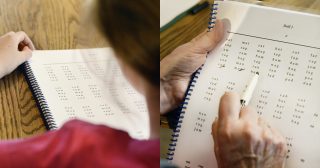








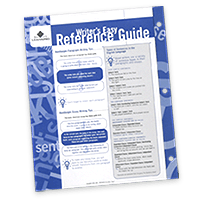

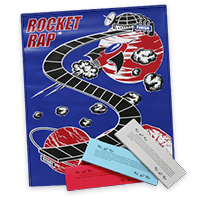

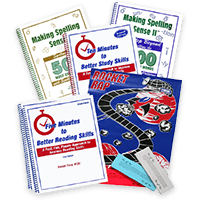
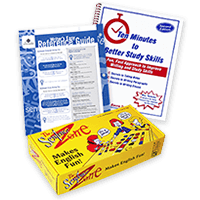











this child knows how to read the problem is bringing him up to speed he reads 23 words per minute and according to the teacher he should be at 43 words per minute?
@Miriam
I’ve just added a post regarding this. Thanks for the question.
Bonnie Terry, M.Ed., BCET